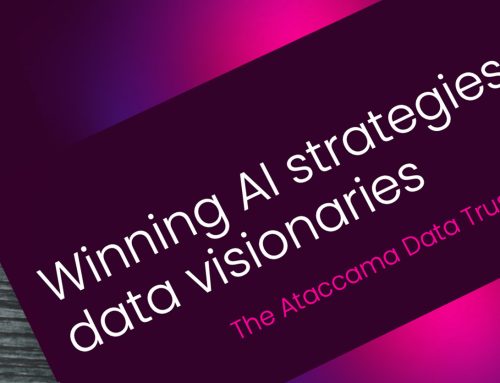Redesigned for Success: Tips to orchestrate better data design inside-out
In a Harvard Business Review article, Digital Transformation is described to need four key areas of “talents” or expertise. These four domains are technology, process, organizational change capability and data. Digital transformation can be a daunting journey, but one that organizations must take to become more data-driven and data-centric.
Of all the four key areas, data is one area that can fortify a digital transformation strategy. Think about our business users, to enable a virtualization dashboard that makes sense, or clearly defined business processes, a strong foundation of data management is critical. Much like the roots of a tree, data management is vital to bringing quality data to the organization. From integrating data sources to delivering data to users, and from cleansing data for use to providing consistency through master and reference data, businesses will only grow and thrive with strong data management roots.
TIBCO shared in this infographic about the different domains of data management that business users do not see. Source: https://www.tibco.com/sites/tibco/files/resources/data-management_infographic7.pdf
To develop an agile, high quality and sustainable data architecture, there are a number of steps to take, and I see them as the following tips that can help organisations orchestrate better data design from inside out.
Apply value-based consulting/engineering
As technology partners, our responsibility goes beyond review architecture or existing data documentation and policies. We must first understand what value these changes can bring to the business. By understanding what business motivators and what are the requirements/wish-lists of business stakeholders, it helps us understand the desired output driven by a successful data management strategy.
At Systemation we have learned to cement business involvement in our projects by realizing some first business benefits early in the project. This approach leads early adoption and ownership by the business, a key success factor for a data management project.
Bring process and innovation together
Next, we need to bring our expertise and experience to our customers as we attempt to address their business challenges. Organizations continue to encounter issues managing inconsistent data and unifying the tools and approaches needed to take control of today’s data beast. New products and technologies make their way into the market at a rapid pace, and an agile data architecture must be designed in a way that it can integrate both best-in-class and innovative technologies. Take TIBCO® Any Data Hub as an example, the framework offers necessary capabilities to support the demand for accurate and consistent data across the organization with trust and control, aligning IT and the business.
Once we identify key products and technologies that can help address the gaps, we then proceed to define the architecture principles and choose a reference architecture. Having a clearly documented approach for decision-making within the design and implementation process help eliminate any miscommunication or misalignment.
Examples of Data Management design principles are the various patterns or integration styles identified in the industry such as Registry, Consolidation, Co-Existence or Centralized Hub.
We can also find opportunities to save time by leveraging on existing data architectures, if business requirements are not unique to the organization. Some existing reference architectures are data warehouse architecture, data lake architecture, logical data warehouse architecture and unified data delivery platform. Source: Read more on Data on Demand
An Ecosystem to Redesign for Success
The above-mentioned best practices are what makes up of our approaches for better data orchestration. They are particularly useful for larger enterprises who may have existing complex infrastructures. Having said that, the same principles for better orchestrations apply to anyone who wants to be more business driven (compelling events, business case driven), be more agile and sustainable.
To help our customers leverage on best-in-class solutions and expertise, we work with TIBCO identified partners like Connected Data Group. What we form is an ecosystem of knowledge where we provide our focus around data design, making high quality data available. The front end of data (like BI, ML, AI, or the usage of data) is undertaken by our partners to actualize for our customers.
If you are interested to find out more about redesigning for success, leave a comment or email us at info@systemation.nl




